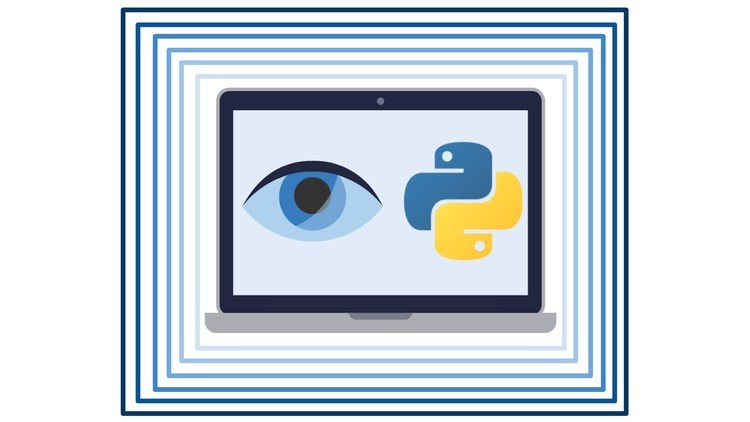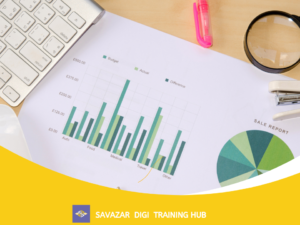
- Description
- Curriculum
- FAQ
- Reviews
Welcome to the ultimate online course on Python for Computer Vision!
This course is your best resource for learning how to use the Python programming language for Computer Vision.
We’ll be exploring how to use Python and the OpenCV (Open Computer Vision) library to analyze images and video data.
The most popular platforms in the world are generating never before seen amounts of image and video data. Every 60 seconds users upload more than 300 hours of video to Youtube, Netflix subscribers stream over 80,000 hours of video, and Instagram users like over 2 million photos! Now more than ever its necessary for developers to gain the necessary skills to work with image and video data using computer vision.
Computer vision allows us to analyze and leverage image and video data, with applications in a variety of industries, including self-driving cars, social network apps, medical diagnostics, and many more.
As the fastest growing language in popularity, Python is well suited to leverage the power of existing computer vision libraries to learn from all this image and video data.
In this course we’ll teach you everything you need to know to become an expert in computer vision! This $20 billion dollar industry will be one of the most important job markets in the years to come.
We’ll start the course by learning about numerical processing with the NumPy library and how to open and manipulate images with NumPy. Then will move on to using the OpenCV library to open and work with image basics. Then we’ll start to understand how to process images and apply a variety of effects, including color mappings, blending, thresholds, gradients, and more.
Then we’ll move on to understanding video basics with OpenCV, including working with streaming video from a webcam. Afterwards we’ll learn about direct video topics, such as optical flow and object detection. Including face detection and object tracking.
Then we’ll move on to an entire section of the course devoted to the latest deep learning topics, including image recognition and custom image classifications. We’ll even cover the latest deep learning networks, including the YOLO (you only look once) deep learning network.
This course covers all this and more, including the following topics:
-
NumPy
-
Images with NumPy
-
Image and Video Basics with NumPy
-
Color Mappings
-
Blending and Pasting Images
-
Image Thresholding
-
Blurring and Smoothing
-
Morphological Operators
-
Gradients
-
Histograms
-
Streaming video with OpenCV
-
Object Detection
-
Template Matching
-
Corner, Edge, and Grid Detection
-
Contour Detection
-
Feature Matching
-
WaterShed Algorithm
-
Face Detection
-
Object Tracking
-
Optical Flow
-
Deep Learning with Keras
-
Keras and Convolutional Networks
-
Customized Deep Learning Networks
-
State of the Art YOLO Networks
-
and much more!
Feel free to message me on Udemy if you have any questions about the course!
Thanks for checking out the course page, and I hope to see you inside!
Jose
-
11Introduction to Images and OpenCV Basics
-
12Opening Image files in a notebook
-
13Opening Image files with OpenCV
-
14Drawing on Images - Part One - Basic Shapes
-
15Drawing on Images Part Two - Text and Polygons
-
16Direct Drawing on Images with a mouse - Part One
-
17Direct Drawing on Images with a mouse - Part Two
-
18Direct Drawing on Images with a mouse - Part Three
-
19Image Basics Assessment
-
20Image Basics Assessment Solutions
-
21Introduction to Image Processing
-
22Color Mappings
-
23Blending and Pasting Images
-
24Blending and Pasting Images Part Two - Masks
-
25Image Thresholding
-
26Blurring and Smoothing
-
27Blurring and Smoothing - Part Two
-
28Morphological Operators
-
29Gradients
-
30Histograms - Part One
-
31Histograms - Part Two - Histogram Eqaulization
-
32Histograms Part Three - Histogram Equalization
-
33Image Processing Assessment
-
34Image Processing Assessment Solutions
-
41Introduction to Object Detection
-
42Template Matching
-
43Corner Detection - Part One - Harris Corner Detection
-
44Corner Detection - Part Two - Shi-Tomasi Detection
-
45Edge Detection
-
46Grid Detection
-
47Contour Detection
-
48Feature Matching - Part One
-
49Feature Matching - Part Two
-
50Watershed Algorithm - Part One
-
51Watershed Algorithm - Part Two
-
52Custom Seeds with Watershed Algorithm
-
53Introduction to Face Detection
-
54Face Detection with OpenCV
-
55Detection Assessment
-
56Detection Assessment Solutions
-
57Introduction to Object Tracking
-
58Optical Flow
-
59Optical Flow Coding with OpenCV - Part One
-
60Optical Flow Coding with OpenCV - Part Two
-
61MeanShift and CamShift Tracking Theory
-
62MeanShift and CamShift Tracking with OpenCV
-
63Overview of various Tracking API Methods
-
64Tracking APIs with OpenCV
-
65Introduction to Deep Learning for Computer Vision
-
66Machine Learning Basics
-
67Understanding Classification Metrics
-
68Introduction to Deep Learning Topics
-
69Understanding a Neuron
-
70Understanding a Neural Network
-
71Cost Functions
-
72Gradient Descent and Back Propagation
-
73Keras Basics
-
74MNIST Data Overview
-
75Convolutional Neural Networks Overview - Part One
-
76Convolutional Neural Networks Overview - Part Two
-
77Keras Convolutional Neural Networks with MNIST
-
78Keras Convolutional Neural Networks with CIFAR-10
-
79LINK FOR CATS AND DOGS ZIP
-
80Deep Learning on Custom Images - Part One
-
81Deep Learning on Custom Images - Part Two
-
82Deep Learning and Convolutional Neural Networks Assessment
-
83Deep Learning and Convolutional Neural Networks Assessment Solutions
-
84Introduction to YOLO v3
-
85YOLO Weights Download
-
86YOLO v3 with Python








